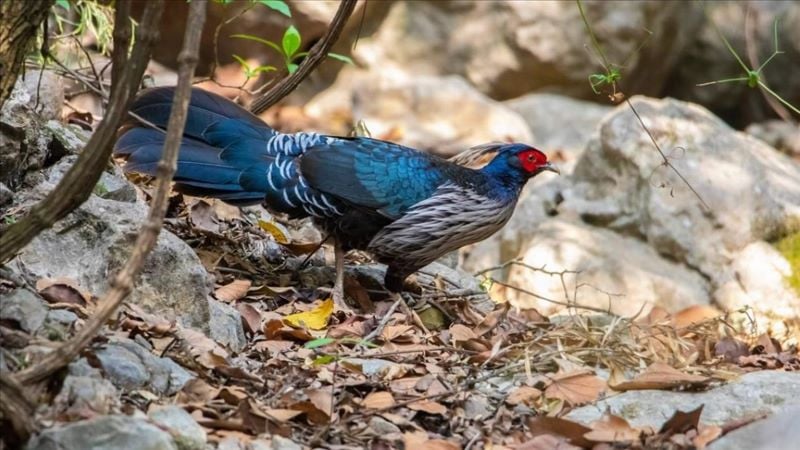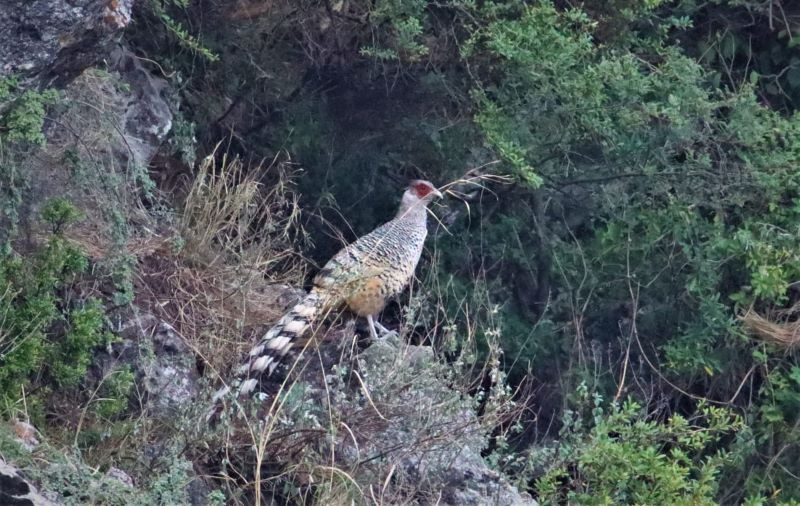
Pakistan is fast losing several rare wild pheasant species due to a string of threats including habitat degradation, hunting, climate change and human intervention, with wildlife experts warning that their extinction would be “disastrous” for ecosystems and biodiversity.
Due to increasing habitat loss driven by climate change, deforestation and poaching, the population of wild pheasants in the country is under persistent threat, according to Mohebullah Naveed, a wildlife expert in Islamabad.
“Pheasants cannot thrive without their habitat,” Naveed, associated with a pheasant conservation project, told Anadolu.
He said that deforestation of forest cover due to climate change and increasing housing and agriculture needs are the primary reasons for the wild bird’s dwindling numbers.
While all native pheasant species are protected under local wildlife laws, hunting and poaching are an equally major threat to two main pheasant species, he said.
“Poaching and hunting are mostly done by locals living close to the [pheasant] habitats. They enjoy this as a sport, although hunting pheasants is illegal,” said Naveed, who serves as a wildlife conservation officer with the Himalayan Wildlife Foundation, an Islamabad-based wildlife group.
He said that another motive behind the poaching and hunting of pheasants is their prized bush meat and beautiful feathers that are used in traditional hats in parts of the northern areas.
In addition, he said that disturbances caused during the collection of medicinal plants in the summer are also a factor.
Endangered and vulnerable
Pakistan is home to six pheasant species: the western horned tragopan (Tragopan melanocephalus), Himalayan monal (Lophura impejanus), koklass pheasant (Pucrasia macrolopha), white-crested kalij (Lophura leucomelanos), Indian peafowl (Pavo cristatus) and cheer pheasant (Catreus wallichii).
Sprawling forests in Azad Jammu and Kashmir, Khyber Pakhtunkhwa and Gilgit-Baltistan are home to wild pheasants.
Cheer pheasants and western horned tragopans are the rarest and most threatened species in the country while others still have viable populations, Muhammad Naeem Awan, director of research and conservation at the World Pheasant Association’s Pakistan chapter, told Anadolu.
These two species have been classified as “endangered” and “vulnerable” and are on the Red List of the International Union for Conservation of Nature (IUCN), according to Awan, who is also a member of the IUCN’s Species Survival Commission.
“The population of these two species is on the decline and the situation demands urgent measures,” he warned, asserting that they should be declared “priority species” by the government to bolster efforts to revive their population.
Public awareness and engagement in conservation efforts are also essential for “long-term success”, he said.
Supporting the argument, Naveed called for habitat preservation and restoration to be a top priority.
“To protect and revive wild pheasant populations, conservation efforts should focus on habitat preservation and restoration, ensuring diverse and natural environments for feeding and breeding,” he said.
“Implementing sustainable agricultural practices, creating protected areas and planting native vegetation will support their habitats.”
Additionally, he said, strict control on poaching, managing predator populations and breeding pheasants in captivity for reintroduction into the wild could help boost their numbers.

Extinction will be ‘disastrous’
There have been no detailed surveys recently to ascertain the current population status of wild pheasant species, according to Jamshed Iqbal Choudhry, an official at the World Wide Fund for Nature-Pakistan (WWF-Pakistan).
However, he said, four species still have “viable” populations, especially in protected areas such as Ayubia National Park and Margalla Hills National Park.
“There is a need to conduct detailed surveys in known potential sites and to explore new areas for their conservation,” he said.
Supporting the view, Naveed said some surveys have been carried out in a few selected areas for certain species, but in the context of the whole of Pakistan, “it’s hard to estimate their current numbers.”
The extinction of wild pheasants would be “disastrous” because they play a crucial role in maintaining the balance of ecosystems, he said.
“Pheasants help control insect populations, disperse seeds and provide food for predators. Their loss could lead to imbalances in food webs, reduced biodiversity and altered vegetation growth, negatively affecting both wildlife and the health of their habitats,” he said.
As part of a larger ecosystem, pheasants help sustain the ecological stability of the areas they inhabit, he added.


1672385156-0/Andrew-Tate-(1)1672385156-0-165x106.webp)














COMMENTS
Comments are moderated and generally will be posted if they are on-topic and not abusive.
For more information, please see our Comments FAQ